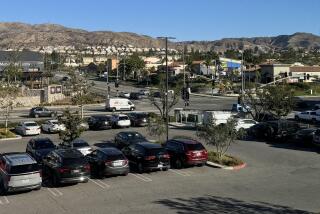Annual Earthquake Drill : South Gate Youths Prepare for Big One
- Share via
It happened Wednesday just as it does one day every year--a major “earthquake” rumbled through Los Angeles Unified School District without shaking so much as a single stone.
It was a simulation, of course. The mock drill, held at every school throughout the district, is designed to test each school’s emergency plan to cope with the aftermath of an 8.3-magnitude quake.
“We’re put in the routine of preparing for the inevitable,” said Joseph Caldera, assistant principal of South Gate Junior High School. “It’s kind of like the Lamaze method (of delivering a baby). We’re going to diffuse some of the pain and suffering by preparing for it beforehand.”
More than 650,000 students and 54,000 teachers and staff participated in “Shake ‘87,” the district’s third annual earthquake drill, said Durrell Maughan, coordinator of emergency services for the district.
Students and teachers are drilled “to make them act instinctively” in the event of a quake, Maughan said.
The drill began at 9:03 a.m. South Gate students crawled under their desks until a bell sounded, announcing the start of the evacuation.
Each class lined up on the asphalt playground behind its teacher. Areas were set up for a command post, first aid area, a place where parents could meet their children and a morgue.
Fire control and rescue teams searched the buildings for “dead” and “injured” students, while a security team guarded the perimeter of the campus.
District observers and the schools’ principals evaluated each drill. Their observations will be compiled into a report issued to the district superintendent in June.
“Each year, they find it gets a bit better,” Maughan said.
However, he added, “I don’t know if you can ever be prepared. Every time we have a drill I think of something else to do.”
As a result of Wednesday’s drill, the district needs to procure special food and portable generators for students at handicapped schools who require special diets and medical attention, Maughan said.
“We’re not there. We’ve got quite a way to go,” he said. “We don’t have enough supplies and equipment. We need to do more training of our staff. We need to have a districtwide communications system.”
Currently, the district would rely on a patchwork system of runners and ham radio operators to communicate with schools if phone lines went down in a quake, Maughan said.
More to Read
Sign up for Essential California
The most important California stories and recommendations in your inbox every morning.
You may occasionally receive promotional content from the Los Angeles Times.













